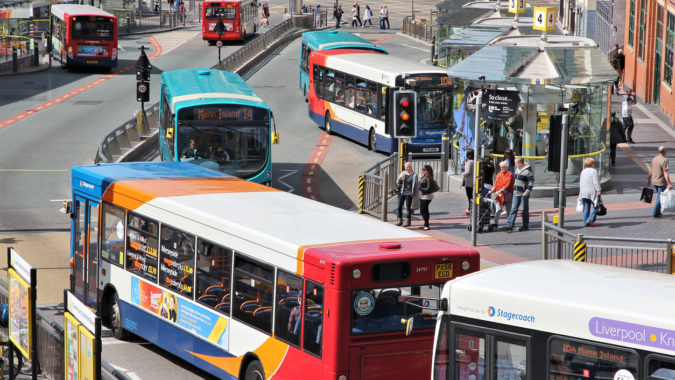In 2016, the National Infrastructure Commission set researchers at the Institute for Fiscal Studies (IFS) two difficult questions: what do people and businesses value when they purchase properties, and how does improving transport infrastructure affect property prices?
The answers to these questions are nuanced and vary across the country. Through analysing a large dataset (residential property prices at point of sale between 2008 and 2017, and commercial rents in 2015), the researchers have come up with an answer. The results make for interesting reading.
The first theme – perhaps not surprisingly – is that businesses tend to think differently to home owners. What business may see as desirable in an area is not the same as what home-owners look for. But there is a large overlap.
Commercial property prices peak in city centres and around transport hubs and corridors. For example, in the East Midlands, property prices are higher around the M1 and A1 corridor. Across the regions, a clear pattern emerges: property prices are higher in places that have shorter travel times to a limited set of ‘significant destinations’, which are almost exclusively the biggest cities.
For home owners and buyers the list of destinations is much longer. For example, proximity to towns bordering national parks, such as Skipton in Yorkshire, is a significant predictor of higher value for house-buyers, but less so for businesses.
There are two further important findings from an infrastructure perspective. First, local areas with a ten per cent higher than average share of land used for roads and rail (a good proxy for accessibility) have higher commercial values in almost all regions. In London, it is associated with property values being nearly 50 per cent higher; in the Northwest, 85 per cent. Interestingly, this is not the case for homeowners. This could be because improved accessibility is desirable, but can come with a cost: increased noise and air pollution.
Second, areas with a higher concentration of commercial properties also have higher commercial property prices. This is consistent with academic research showing firms are more productive when they cluster together, particularly in high value services.
The picture of what home-owners value in their purchasing decisions is more complex. The report shows that buyers value gardens, greenspace and access to national parks; new builds sell at a premium; flood risk and noise don’t appear to matter, but this may be because flood risk goes hand-in-hand with access to scenic views and traffic noise goes hand-in-hand with access to transport.
The research quantifies all these factors: the new build premium is around ten per cent in the South and twenty per cent in the North; leaseholds sell for ten per cent less in London; and, a ten per cent increase in greenspace in the local area increases residential property prices by twenty-four per cent in the South East and by forty-one per cent in the West Midlands (for commercial property prices this association is generally negative).
What is clear is that residential property prices rise with proximity to major cities but, unlike commercial property prices, they can also peak outside city centres in popular suburbs. This validates the National Infrastructure Assessment’s message that it is important to connect desirable places to live with desirable places to work; good urban transport networks do this.
The report also attempts to quantify the value property owners place on accessibility through a series of stylised, hypothetical projects.
A road scheme, for example, which reduced journey times by 10 per cent on average in a region, would increase property prices by on average £3,200, £2,100 and £900 in the Cambridge-Milton Keynes-Oxford Arc, the East Midlands, and Yorkshire respectively. This seems small – roughly one per cent of the value of the house – but is not trivial.
When aggregated across all the houses that are affected, it can become a significant sum of money. Commercial property prices would rise by more, roughly two per cent of the existing average property values. The impacts for public transport are more modest, but this make sense when you consider that the majority of journeys outside London are made by car.
Alongside the report, the researchers created an online tool. This allows a user either to build a hypothetical new road, improve existing transport connections or construct new settlements and observe the estimated impact on property prices in the surrounding area. The estimates are not, of course, the actual value that would be realised, but are best guesses based on average values for similar places in the same region.
The tool is helpful in understanding small scale interventions, especially ones whose economic impact is limited to one region. However, it is not able to capture the impact of large new schemes which might substantially alter commuting patterns across multiple regions, such as Crossrail or HS2.
Such schemes can shift economic activity and households can move over time to respond to the new circumstances. Major changes of this sort are always difficult to model and this tool does not aim to do so.
The report contains much detail, but two clear conclusions emerge.
First, at a broad level, both households and businesses are paying to be near the centres of cities, particularly big cities. This validates the Commission’s work in the National Infrastructure Assessment that cities are productive places to work and desirable places to live.
It also underlines the importance of investing in urban transport infrastructure to allow households to access those opportunities. This will be an important question in the government’s National Infrastructure Strategy.
Second, at the local level, property valuation decisions are incredibly nuanced, driven by numerous factors such as green space, transport, and access to national parks. It is important, therefore, that local authorities should have flexibility in raising revenue through land value capture tools such as developer contributions, so long as that flexibility is not gamed by other parties.
The government’s elimination of pooling restrictions and the forthcoming introduction of Strategic Infrastructure Tariffs, as recommended by the Commission, are important and welcome steps in this direction.
As part of the project, all the publicly available data has been published on the IFS project website.
Tom Bousfield is an economist at the National Infrastructure Commission.



